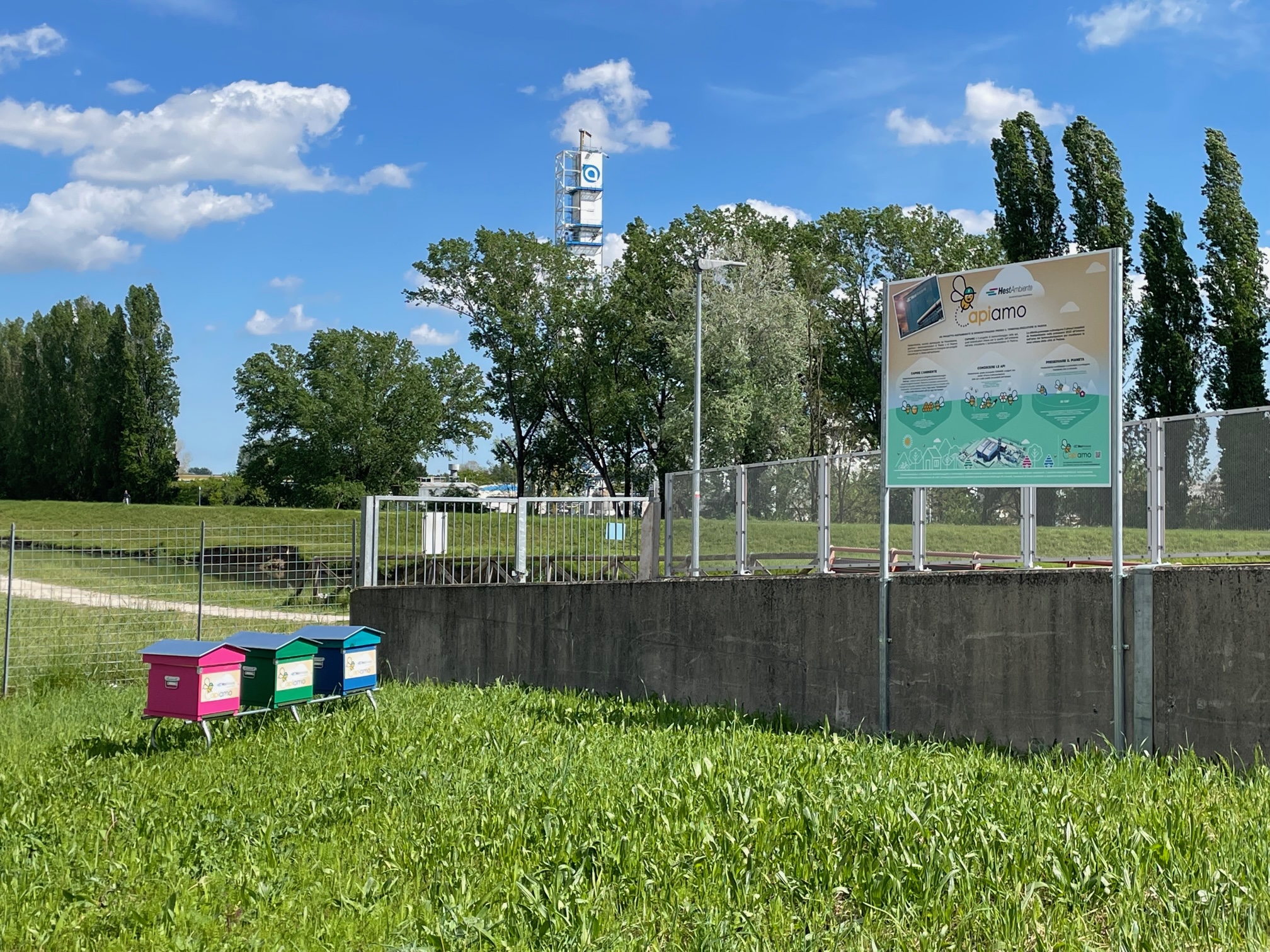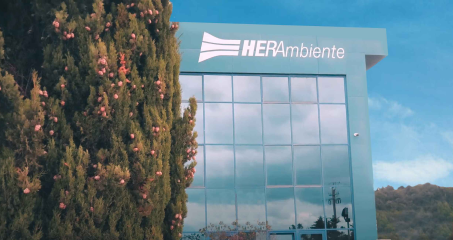Biomonitoring with bees on the Padua waste-to-energy plant: results published
23/04/2025
Samples taken on beehives at the plant show pollutant levels consistent with other urban areas attest to the plant's insignificance on air quality. Monitoring will continue after the startup of the new line

Voluntary project that integrates the controls required by regulations and Authorization
A plant that is substantially irrelevant to the quality of the surrounding air. This is the outcome of the biomonitoring with bees carried out in 2024 in the area surrounding the waste-to-energy plant in Padua as part of the Capiamo Project, a voluntary monitoring activated by Herambiente (belonging to the Hera Group and parent company of Hestambiente), in collaboration with Apicoltura Urbana Srl (a company specializing in biodiversity and environmental education projects). This is a study in addition to the controls already normally required by the regulations and the plant's Integrated Environmental Authorization, to help protect the environment and biodiversity.
Project active since 2023 on an area of about 2,800 hectares
The Capiamo project started in the spring of 2023, with the installation in the area of the plant, on the Piovego riverfront, of 3 hives containing a total of about 150,000 bees, of which about 22,500 are foragers, capable of visiting about 45 million flowers every day, within a radius of 3-4 km from the plant. Moving over an area of about 2,800 hectares, the insects come into contact with a huge number of very different environmental matrices: flowers, first of all, but also water in different forms (puddles, rivers, dew, etc.), tree resin and, of course, the air. Substances in the environment then accumulate within the hive, on the bees themselves and their products (bee bread, wax and honey), making it quick and easy to retrieve highly representative samples for analysis.
Heavy metals and dioxins were also among the pollutants monitored
The sampling activities and subsequent analysis at an independent laboratory, carried out in 2024, examined the bees themselves and their products: wax, beeswax, and honey (both honeycomb and extracted). Within these samples, 34 in all, were analyzed for the presence of heavy metals (Aluminum, Antimony, Arsenic, Beryllium, Cadmium, Chromium, Iron, Manganese, Mercury, Nickel, Lead, Copper, Selenium, Tin, Vanadium, and Zinc), pesticide residues, polycyclic aromatic hydrocarbons (PAHs), dioxins, furans, and polychlorinated biphenyls.
Detailed results on Herambiente website: waste-to-energy plant irrelevant on air quality
The results, published on Herambiente's website, showed the presence of pollutants at levels consistent with those typical of anthropized areas, (especially with reference to the presence of some heavy metals such as iron, aluminum, manganese and zinc). So, the San Lazzaro waste-to-energy plant does not appear to affect the surrounding environment.
Moreover, the 2024 results are consistent with those of the 2023 campaign, where again, the presence of heavy metals produced by human activities in the area (e.g., vehicular traffic, heating, and industrial activities) had been detected in the samples, but without evidence of a specific impact resulting from the waste-to-energy plant's contribution.
Long-term monitoring that will also accompany the start-up of the new line
The monitoring, will continue with a long-term perspective. Certainly, in fact, it will also accompany the first years of the start-up of the new treatment line currently under construction, which is intended to replace the two older ones. In this way, it will be possible to verify the possible impact compared to the previous set-up of the plant.
Ramonda: “a tool for transparency and discussion with the community”
“The project is not only intended to be an additional element of environmental safety, but also a tool for transparency and discussion with the community,” explains Andrea Ramonda, CEO of Herambiente. “That's why the results of each annual monitoring are published on our website, within a special Capiamo section, which hosts the results of similar biomonitoring carried out or underway at other Group plants, such as, for example, the waste-to-energy plants in Bologna and Pozzilli (IS), or the composting plant with biomethane production in Sant'Agata Bolognese (BO).”

